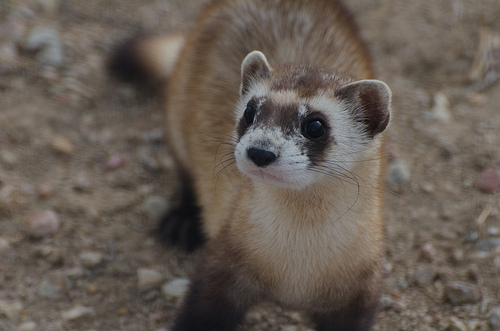 It’s been a good year for lead levels in condors in Arizona and Utah. While last year saw the second worst levels on record, this year saw the lowest level in a decade, says a press release from the Arizona Game and Fish Department.
It’s been a good year for lead levels in condors in Arizona and Utah. While last year saw the second worst levels on record, this year saw the lowest level in a decade, says a press release from the Arizona Game and Fish Department.
“The ups and downs of lead poisoning over the years demonstrate that any single season does not make a trend, but our test results are encouraging,” said Eddie Feltes, field manager for The Peregrine Fund’s condor project in the release. “If this ends up being the beginning of a trend, we hope it will continue.”
Arizona Game and Fish, as well as the Peregrine Fund, which also distributed the release, believe that voluntary lead ammunition measures in the two states has contributed to the lower lead levels in condors there. Another factor may be the unseasonably mild winter, the release says.
In an article in the Salt Lake City Tribune, Chris Parish, condor program coordinator for The Peregrine Fund is quoted as saying, “The half life of lead in blood is a very short period. That gives us a relatively good indication of where and when exposure may have happened.”
The Tribune article also says that 78 percent of hunters in condor country who were contacted were voluntarily using non-lead ammunition. In 2011 the number was 10 percent.
More details in the Arizona Game and Fish press release here. (Halfway down the page.)
The same press release is here on its own page at the Peregrine Fund website.
The Salt Lake City Tribune article is here.
Photo: Courtesy Arizona Game and Fish Department

 After the Wallow Fire, Arizona’s largest wildfire, burned 538,000 acres, a half-dozen biologists lead by Northern Arizona University researchers came in to study bats’ reaction to the changed ecosystem, an article in
After the Wallow Fire, Arizona’s largest wildfire, burned 538,000 acres, a half-dozen biologists lead by Northern Arizona University researchers came in to study bats’ reaction to the changed ecosystem, an article in  Where are there more mountain lions? There are increases Puma concolor sightings just about everywhere, recent news reports say.
Where are there more mountain lions? There are increases Puma concolor sightings just about everywhere, recent news reports say. Researchers from the Hawk Mountain Sanctuary in Pennsylvania have been studying vultures throughout the New World to see if they are effective sentinels for environmental pollutants, such as lead.
Researchers from the Hawk Mountain Sanctuary in Pennsylvania have been studying vultures throughout the New World to see if they are effective sentinels for environmental pollutants, such as lead. For decades, captive tortoises have suffered from a mysterious ailment known as “upper respiratory tract disease.” The disease was known in captive tortoises in Europe and the United States, according to
For decades, captive tortoises have suffered from a mysterious ailment known as “upper respiratory tract disease.” The disease was known in captive tortoises in Europe and the United States, according to  “The most feasible action that would benefit black-footed ferret recovery is to improve prairie dog conservation,” said Pete Gober, black-footed ferret recovery coordinator for the
“The most feasible action that would benefit black-footed ferret recovery is to improve prairie dog conservation,” said Pete Gober, black-footed ferret recovery coordinator for the  Bat Conservation International
Bat Conservation International